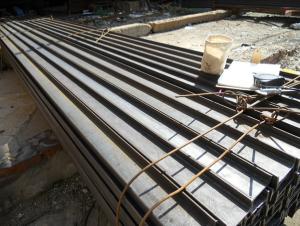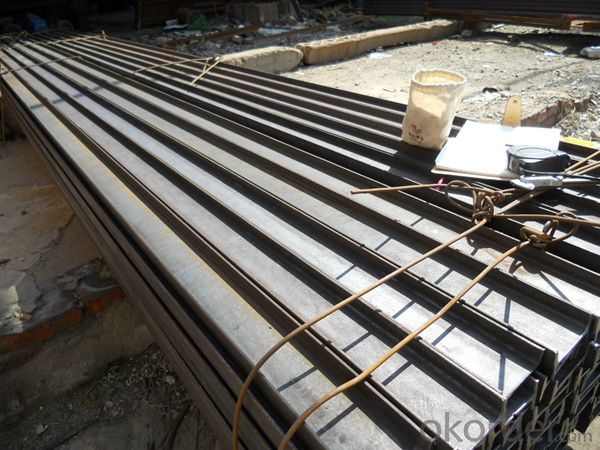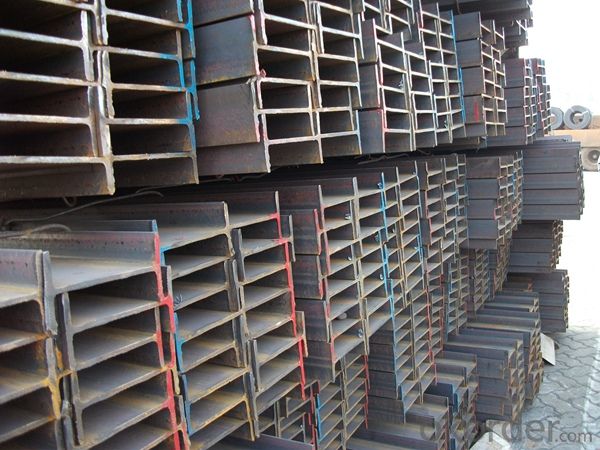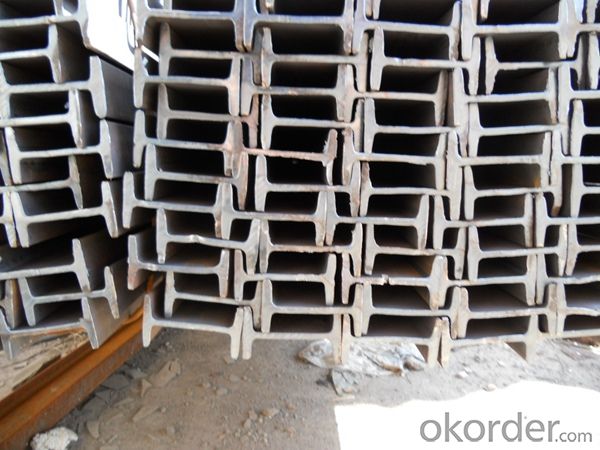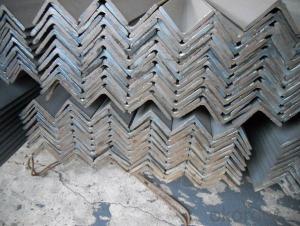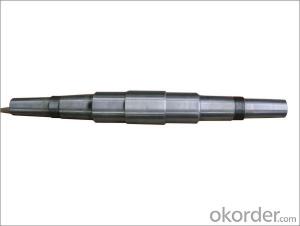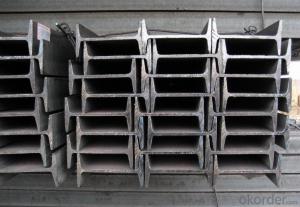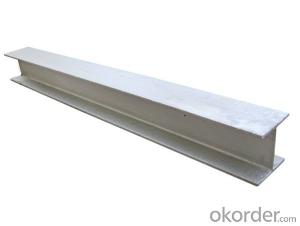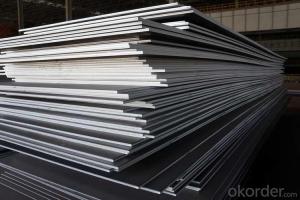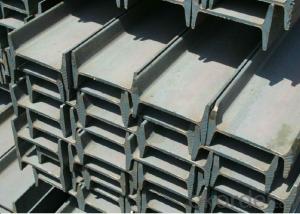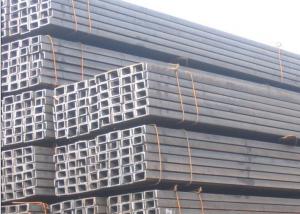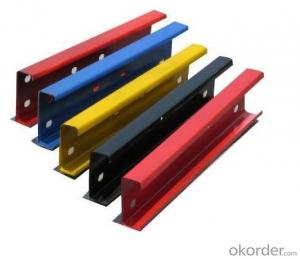Hot Rolled Mild EN Standard I Beams for Structure Construction
- Loading Port:
- Tianjin
- Payment Terms:
- TT or LC
- Min Order Qty:
- 25 m.t.
- Supply Capability:
- 200000 m.t./month
OKorder Service Pledge
OKorder Financial Service
You Might Also Like
Product Description:
OKorder is offering Hot Rolled Mild EN Standard I Beams for Structure Construction at great prices with worldwide shipping. Our supplier is a world-class manufacturer of steel, with our products utilized the world over. OKorder annually supplies products to European, North American and Asian markets. We provide quotations within 24 hours of receiving an inquiry and guarantee competitive prices.
Product Applications:
Hot Rolled Mild EN Standard I Beams for Structure Construction are ideal for structural applications and are widely used in the construction of buildings and bridges, and the manufacturing, petrochemical, and transportation industries.
1. Supporting members, most commonly in the house raising industry to strengthen timber bears under houses. Transmission line towers, etc
2. Prefabricated structure
3. Medium scale bridges
4. It is widely used in various building structures and engineering structures such as roof beams, bridges, transmission towers, hoisting machinery and transport machinery, ships, industrial furnaces, reaction tower, container frame and warehouse etc.
Product Advantages:
OKorder's Hot Rolled Mild EN Standard I Beams for Structure Construction are durable, strong, and resist corrosion. And they are made of high quality of steel billets of China.
Main Product Features:
· Premium quality
· Prompt delivery & seaworthy packing (30 days after receiving deposit)
· Corrosion resistance
· Can be recycled and reused
· Mill test certification
· Professional Service
· Competitive pricing
Product Specifications:
1. Product name: Hot Rolled Mild EN Standard I Beams for Structure Construction
2. Standard: EN10025, GB Standard, ASTM, JIS etc.
3. Grade: Q235B, A36, S235JR, Q345, SS400 or other equivalent.
4. Length: 5.8M, 6M, 9M, 10M, 12M or as your requirements
Section | Standard Sectional Dimensions(mm) | ||||
h | b | s | t | Mass Kg/m | |
IPE80 | 80 | 46 | 3.80 | 5.20 | 6.00 |
IPE100 | 100 | 55 | 4.10 | 5.70 | 8.10 |
IPE120 | 120 | 64 | 4.80 | 6.30 | 10.40 |
IPE140 | 140 | 73 | 4.70 | 6.90 | 12.90 |
IPE160 | 160 | 82 | 5.00 | 7.40 | 15.80 |
IPE180 | 180 | 91 | 5.30 | 8.00 | 18.80 |
IPE200 | 200 | 100 | 5.60 | 8.50 | 22.40 |
IPE220 | 220 | 110 | 5.90 | 9.20 | 26.20 |
IPE240 | 240 | 120 | 6.20 | 9.80 | 30.70 |
IPE270 | 270 | 135 | 6.60 | 10.20 | 36.10 |
IPEAA80 | 80 | 46 | 3.20 | 4.20 | 4.95 |
IPEAA100 | 100 | 55 | 3.60 | 4.50 | 6.72 |
IPEAA120 | 120 | 64 | 3.80 | 4.80 | 8.36 |
IPEAA140 | 140 | 73 | 3.80 | 5.20 | 10.05 |
IPEAA160 | 160 | 82 | 4.00 | 5.60 | 12.31 |
IPEAA180 | 180 | 91 | 4.30 | 6.50 | 15.40 |
IPEAA200 | 200 | 100 | 4.50 | 6.70 | 17.95 |
FAQ:
Q1: Why buy Hot Rolled Mild EN Standard I Beams for Structure Construction from OKorder.com?
A1: All Hot Rolled Mild EN Standard I Beams for Structure Construction offered byOKorder.com are carefully selected from China's most reliable manufacturing enterprises. Through its ISO certifications, OKorder.com adheres to the highest standards and a commitment to supply chain safety and customer satisfaction.
Q2: How do we guarantee the quality of our Hot Rolled Mild EN Standard I Beams for Structure Construction?
A2: We have established an advanced quality management system which conducts strict quality tests at every step, from raw materials to the final product. At the same time, we provide extensive follow-up service assurances as required.
Q3: How soon can we receive the Hot Rolled Mild EN Standard I Beams for Structure Construction after purchase?
A3: Within three days of placing an order, we will begin production. The specific shipping date is dependent upon international and government factors, but is typically 7 to 10 workdays.
Q5: Can Hot Rolled Mild EN Standard I Beams for Structure Construction rust?
A5: Stainless does not "rust" as you think of regular steel rusting with a red oxide on the surface that flakes off. If you see red rust it is probably due to some iron particles that have contaminated the surface of the stainless steel and it is these iron particles that are rusting. Look at the source of the rusting and see if you can remove it from the surface.
Images:
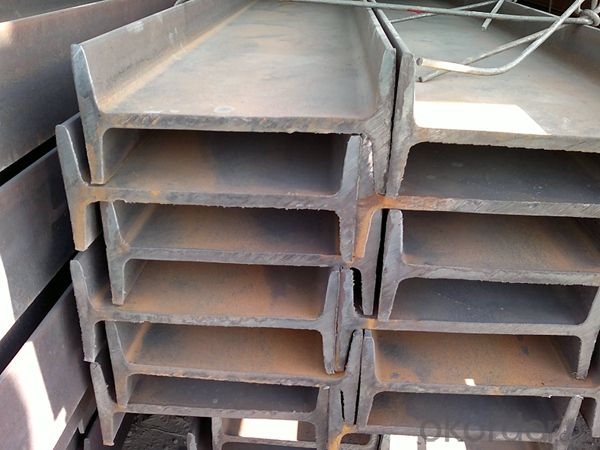
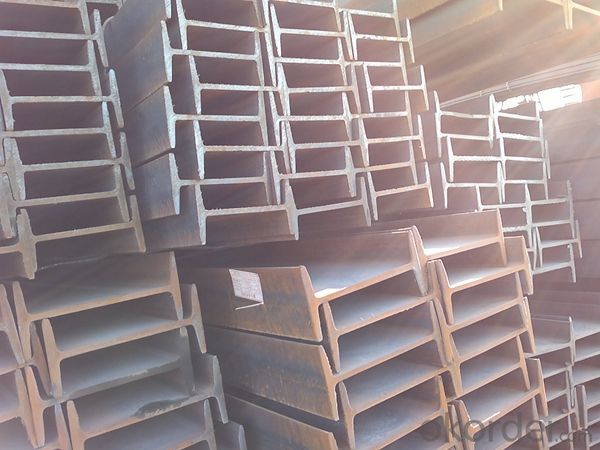
- Q: Steel arc bending machine can provide the best what? ` type details
- Is there a 3D molding requirement that will determine the number of NC shafts?.
- Q: What are the different types of steel channel connections for door frames?
- Door frames commonly utilize various types of steel channel connections, including welded connections, bolted connections, riveted connections, corner brackets, and adjustable connections. The most prevalent method for steel channel door frames is welded connections. This involves welding the steel channels together at the corners to create a robust and secure frame. Alternatively, bolted connections are frequently employed. This approach entails drilling holes in the channels and inserting bolts to fasten the frame. This type of connection allows for convenient disassembly and reassembly, if necessary. Riveted connections are also utilized in steel channel door frames. This method involves drilling holes in the channels and inserting rivets to hold them together. Riveted connections offer a resilient and long-lasting connection. In some instances, corner brackets may be used to connect the steel channels. Made of steel, these brackets are affixed to the corners of the channels using screws or bolts. Corner brackets provide additional stability and strength to the door frame. Certain steel channel door frames may feature adjustable connections. These connections facilitate easy adjustment of the frame during installation to ensure it is level and plumb. Typically, screws or bolts are used to hold the channels in place, allowing for flexibility in positioning. Ultimately, the choice of steel channel connection for a door frame depends on various factors, including project requirements, desired strength and stability, and ease of installation and maintenance.
- Q: What are the different methods of finishing steel channels?
- There are several methods of finishing steel channels, each with its own unique characteristics and benefits. Some of the most common methods include: 1. Hot-dip galvanizing: This process involves immersing the steel channels in a bath of molten zinc. The zinc coating provides excellent corrosion resistance, making it ideal for outdoor applications. Hot-dip galvanizing also creates a durable and long-lasting finish. 2. Powder coating: Powder coating involves applying a dry powder to the steel channels and then curing it under heat. This method provides a thick and even coating that is highly resistant to chipping, scratching, and fading. Powder coating is available in a wide range of colors and finishes, allowing for customization. 3. Paint coating: Steel channels can also be finished with various types of paint coatings. These coatings provide both aesthetic appeal and protection against corrosion. Paint coatings can be applied using spray guns, brushes, or rollers, and they offer flexibility in terms of color and texture. 4. Electroplating: Electroplating is a process in which a thin layer of metal, such as chrome or nickel, is bonded to the steel channels through an electrochemical reaction. This method enhances the appearance of the steel channels, providing a decorative and lustrous finish. Electroplating can also improve the corrosion resistance of the steel. 5. Anodizing: Anodizing is primarily used for finishing aluminum channels but can also be used on steel channels. It involves creating an oxide layer on the surface of the metal through an electrochemical process. Anodized steel channels have increased corrosion resistance, improved hardness, and can be dyed in various colors. 6. Mechanical finishes: Mechanical finishes are achieved through processes such as grinding, polishing, or brushing. These finishes alter the surface texture of the steel channels, creating a specific appearance or removing imperfections. Mechanical finishes can range from a smooth and glossy look to a matte or textured finish. Overall, the choice of finishing method for steel channels depends on the desired appearance, level of corrosion resistance, and the specific application requirements. Each method offers its own advantages and considerations, enabling manufacturers and end-users to select the most suitable finish for their needs.
- Q: How do steel channels perform in high-wind areas?
- Steel channels perform well in high-wind areas due to their strength and durability. The structural integrity of steel channels allows them to withstand the strong forces exerted by high winds, providing stability and resistance against potential damage or collapse.
- Q: How to choose angle steel and channel steel for dry hanging stone?
- A qualified design unit is required. Material selection as required.
- Q: 24 meters long, 4 meters per column, 6 meters wide. How large channel steel should be used to make the beam?
- Bending moment M = 1/4PL = 16100NmP=18400N=18.4kNThe safety factor is taken as 1, and if the other is taken, the carrying capacity P is correspondingly reduced.
- Q: Can steel channels be used for roof structures?
- Yes, steel channels can be used for roof structures. Steel channels are commonly used in construction for their strength and durability. They provide structural support and can be used as purlins or rafters in roof systems. Steel channels are able to withstand heavy loads and provide stability to the overall structure. They can also be easily fabricated and installed, making them a popular choice for roof construction. Additionally, steel channels are resistant to fire, corrosion, and pests, making them a reliable and long-lasting option for roof structures.
- Q: What are the applications of steel channels in construction?
- Steel channels have a wide range of applications in construction. They are commonly used as structural components in buildings, bridges, and infrastructure projects. These channels provide support and stability, helping to distribute the load and resist bending or twisting forces. They are also used for framing, reinforcing concrete structures, and creating architectural details. Overall, steel channels play a crucial role in enhancing the strength, durability, and safety of various construction projects.
- Q: How big is the channel used for the 4 metre span?
- The same height of the I-beam, if there are several different leg width and waist thickness, should be added on the right side of the model a, B, C to distinguish, such as 32a#, 32b#, 32c# and so on. The I-beam is made of ordinary I-beam and light I-beam, and the specification for hot-rolled ordinary I-beam is 10-63#. Standard Specification for hot-rolled ordinary I-beam supplied by supply and demand agreement is 12-55#. I-beam is widely used in various building structures, bridges, vehicles, supports, machinery and so on.
- Q: How do steel channels contribute to water management in construction?
- Steel channels play a crucial role in water management in construction projects. These channels are typically used to create efficient drainage systems that help redirect and control the flow of water. One of the main ways steel channels contribute to water management is by providing a durable and reliable structure to channel water away from construction sites. They can be used to create drainage ditches, culverts, or canals that help prevent water accumulation and potential flooding. Steel channels are also commonly used to construct stormwater management systems. These systems are designed to collect, store, and distribute rainwater effectively, reducing the risk of erosion and surface runoff. Steel channels can be utilized to create channels or channels with grates that collect rainwater and direct it towards designated storage areas or underground tanks. In addition, steel channels are often used in the construction of retaining walls and barriers. These structures are crucial for preventing soil erosion and managing water runoff. By incorporating steel channels into the design of these walls, water can be effectively redirected, preventing soil erosion, and maintaining the structural integrity of the construction site. Furthermore, steel channels can be used to create efficient irrigation systems in construction projects. By directing water to specific areas, these channels ensure that water is distributed evenly, minimizing water waste and optimizing plant growth. Overall, steel channels are essential components of water management in construction. Their durability, versatility, and reliability make them ideal for creating drainage systems, stormwater management systems, retaining walls, and irrigation systems. By effectively managing water, construction projects can avoid potential damage, maintain a safe working environment, and ensure sustainable water usage.
Send your message to us
Hot Rolled Mild EN Standard I Beams for Structure Construction
- Loading Port:
- Tianjin
- Payment Terms:
- TT or LC
- Min Order Qty:
- 25 m.t.
- Supply Capability:
- 200000 m.t./month
OKorder Service Pledge
OKorder Financial Service
Similar products
Hot products
Hot Searches
Related keywords
